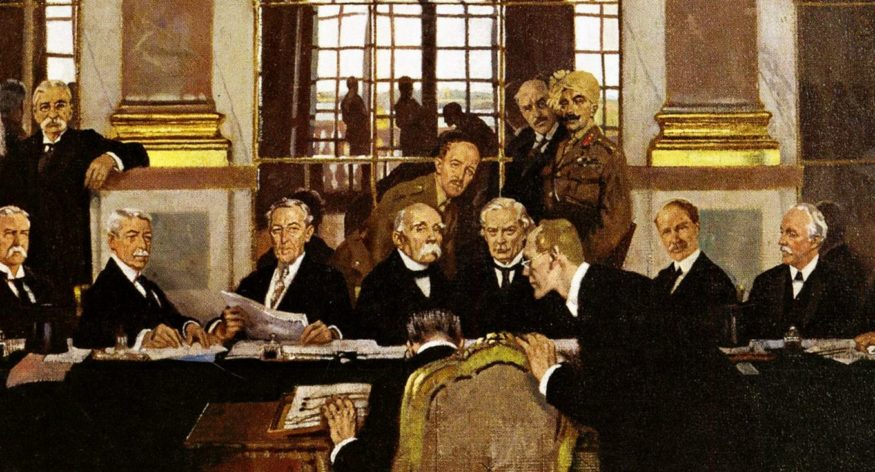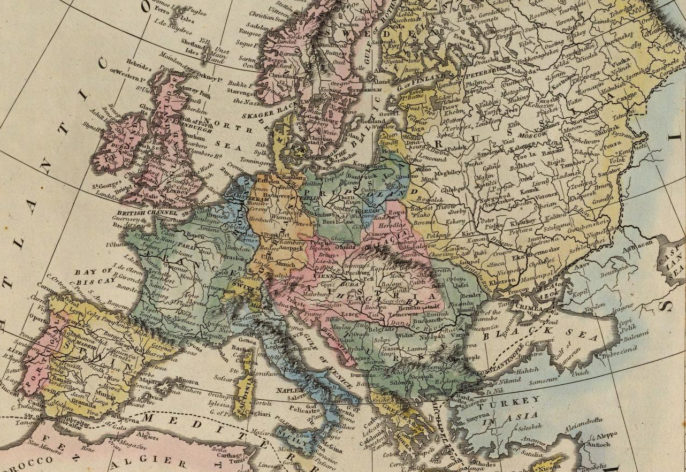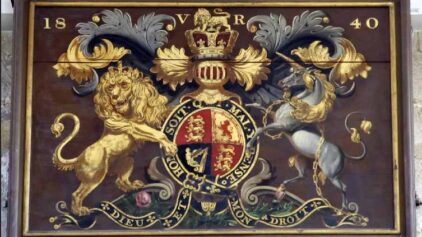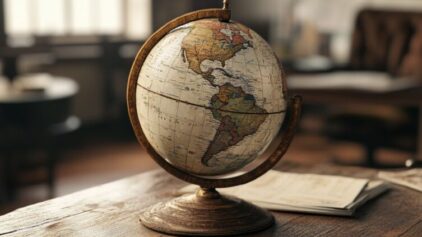

 This is a guest post by Andrew Koch, an editor and content producer for FamilyTreeMagazine.com. In addition to the print and digital versions of Family Tree Magazine, he and a team of editors publish how-to genealogy books, webinars, and online courses.
This is a guest post by Andrew Koch, an editor and content producer for FamilyTreeMagazine.com. In addition to the print and digital versions of Family Tree Magazine, he and a team of editors publish how-to genealogy books, webinars, and online courses.
Let’s face it: Many people think history is boring. Researching our own ancestors is one thing, but why should we care about centuries-old wars and long-dead kings? European history—with its quibbling monarchs and convoluted border changes—is especially dry.
But those of us with European roots have an important reason to research the continent’s history: The country your ancestors’ hometown was located in then affects where you can find records now. And more importantly, the broad strokes of European history can help us better understand our ancestors’ lives and communities—including why they may have emigrated.
Fortunately for genealogists, we don’t need to know much European history to get by. While working on our atlas, “The Family Tree Historical Maps Book: Europe,”I pieced together the key events in European history that changed the continent’s political boundaries. In this article, I’ll share the five most-important historical events that shaped the map of Europe—and the lives of the people who lived there.
 David Rumsey Map Collection]" width="686" height="472" />
David Rumsey Map Collection]" width="686" height="472" />This map shows Europe in 1823, shortly after the Congress of Vienna. [David Rumsey Map Collection]
The Thirty Years’ War is one of many drawn-out European conflicts. To summarize: A spat between Protestants and Catholics in the Holy Roman Empire exploded into continent-wide war, with Habsburg Austria and Spain fighting against France, England, Sweden, and others. In the Peace of Westphalia (which ended most of the fighting), the Holy Roman Empire lost territory and had its power decentralized, while Switzerland and the Dutch Republic each gained independence. Since many genealogy records begin in the 17th century, the boundaries set by the Peace of Westphalia can serve as a useful starting point as you begin looking for documents.
The Partitions of Poland (1772–1795)
With Polish politics in disarray, Prussia, Austria, and Russia conspired to strip the Polish-Lithuanian Commonwealth of its territory. As a result, Poland lost land in three seizures between those countries in 1772, 1793, and 1795. The third partition effectively wiped Poland from the map, and Poles wouldn’t have a sovereign state again until after World War I. Those with Prussian, German, and Austrian ancestry (in addition to those with Polish ancestors) can benefit from maps of this and later time periods.
The Congress of Vienna (1815)
Napoleon Bonaparte conquered much of Central Europe in the early 1800s, and European boundaries were due for a reset after his defeat. The victorious European powers redrew many borders to contain France and hopefully ensure future peace. Per the treaty, France returned to its pre-Napoleonic Wars boundaries, and the council gave (or returned) significant chunks of land to Prussia, Austria, and Russia. Several of the German and Italian city-states were consolidated or merged, sparking interest in unified nations for those ethnic groups. The Netherlands regained its independence (along with Belgium, which became independent in 1830), and Denmark lost Norway to Sweden. Notably, the Congress also created the German Confederation (a league of independent German states) and the Russia-owned, semi-autonomous Congress Kingdom of Poland.
The Unifications of Italy (1861) and Germany (1871)
After the Napoleonic Wars and the Revolutions of 1848, nationalism swept across Europe. This led some residents of the various Italian and German city-states to found new countries: the Kingdom of Italy in 1861, and the German Empire in 1871. The two movements shared some similarities, each rallying around strong leaders from the most prominent city-states (Victor Emmanuel II and Giuseppe Garibaldi from the Kingdom of Sardinia in Italy, and Wilhelm I and Otto von Bismarck of Prussia in Germany). Unification is an important “boundary” year for those researching these countries, as all records before unification were kept at the local level.
The Treaty of Versailles (1919)
The Great War devastated Europe, and its victors vowed to create a new power structure that would prevent such a disaster from occurring again. The Austro-Hungarian Empire, one of the Central Powers, was dissolved into several new countries: Austria, Hungary, Czechoslovakia, and Yugoslavia. Blamed for instigating the war, Germany lost huge chunks of land, including to a newly created Polish state. If you have ancestors who lived in or emigrated from Europe during the interwar period or shortly after the outbreak of World War II, pay special attention to maps from this era.
Your historical research shouldn’t end here. Once you’ve determined where your ancestors lived, study the history of the region to understand who was in power and where records from your ancestors’ time are held today. For more on European history, check out The Family Tree Historical Maps Book: Europe, an atlas showing Europe from the 1700s to the early 1900s, and The Family Tree Guidebook to Europe, a how-to guide for tracing your European ancestors.









